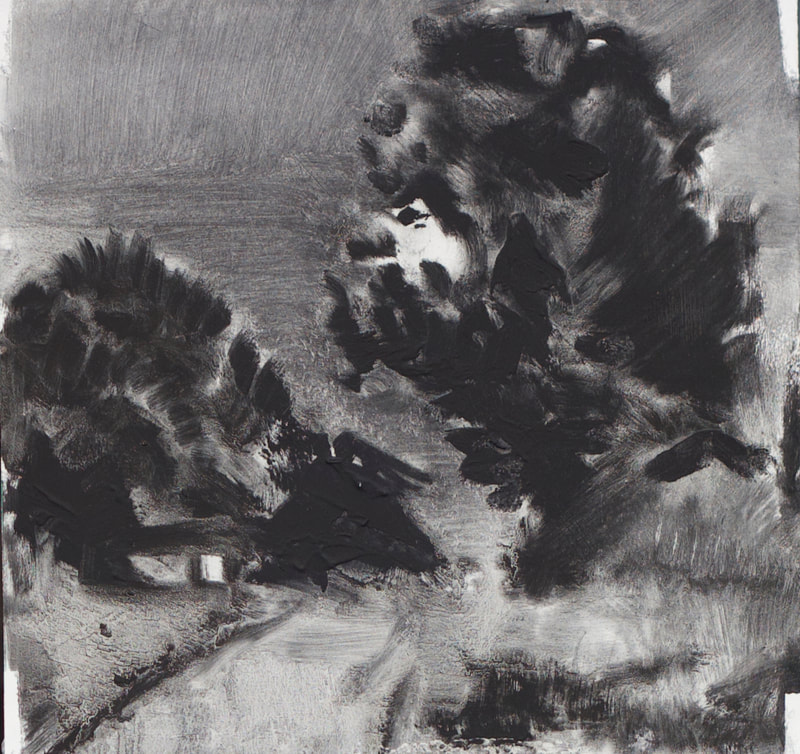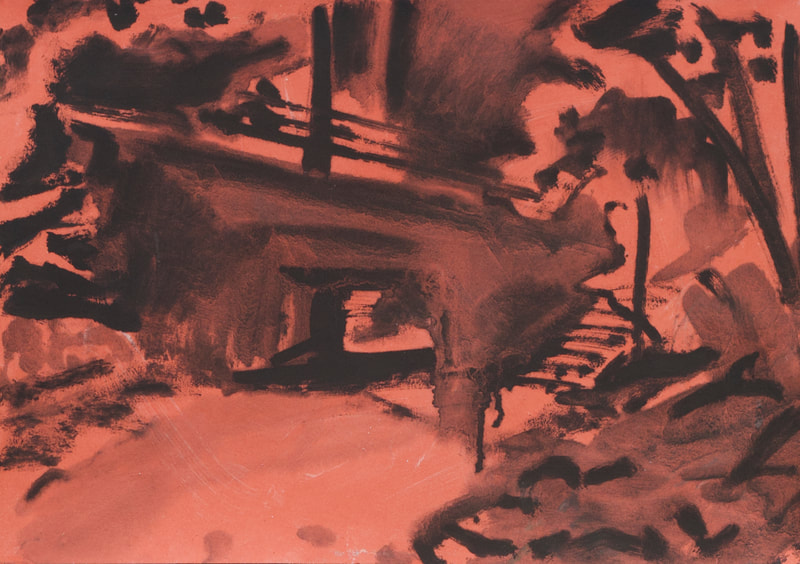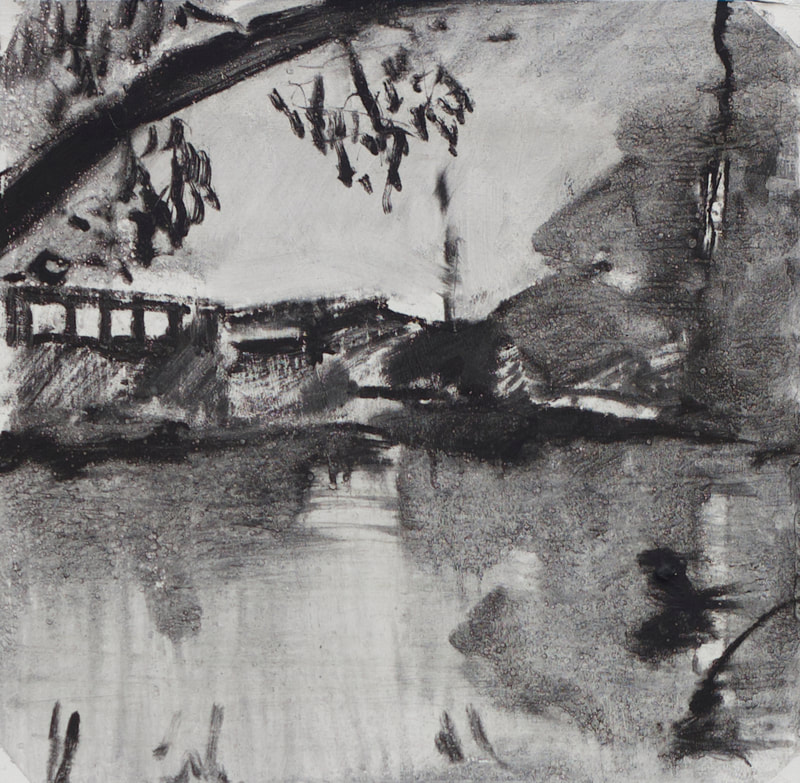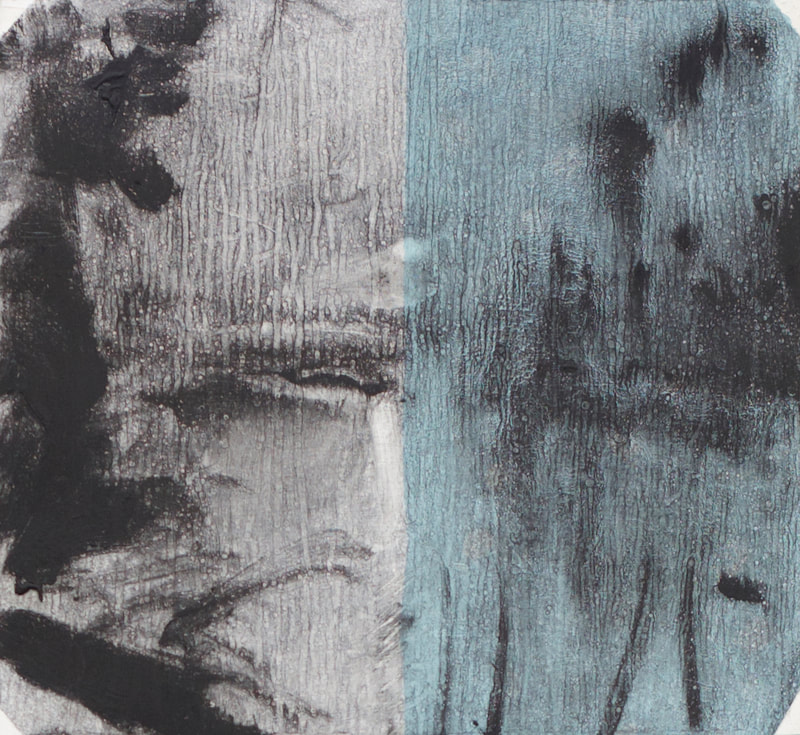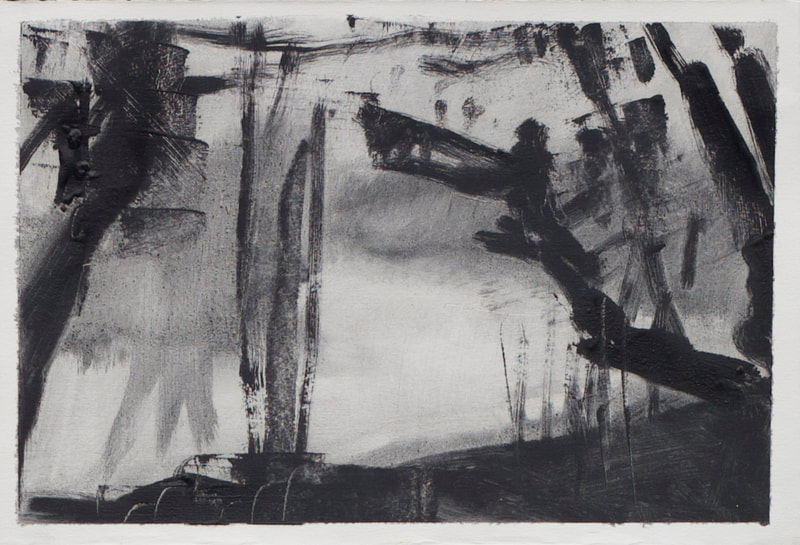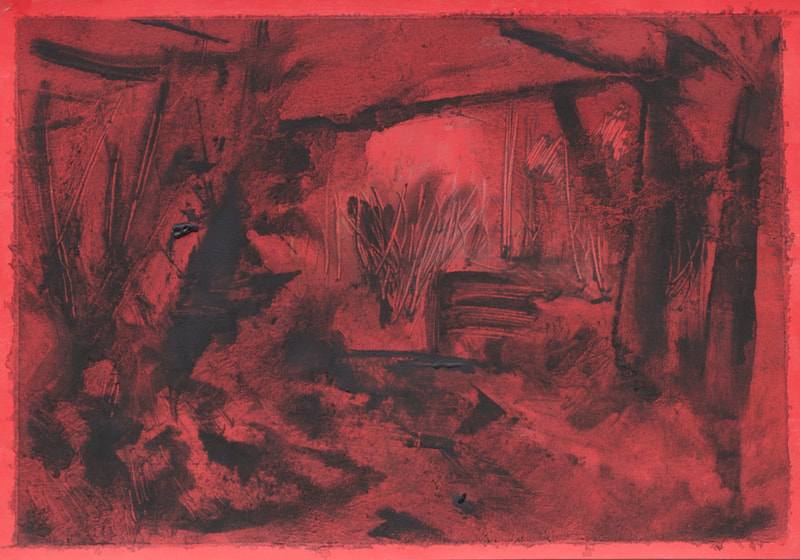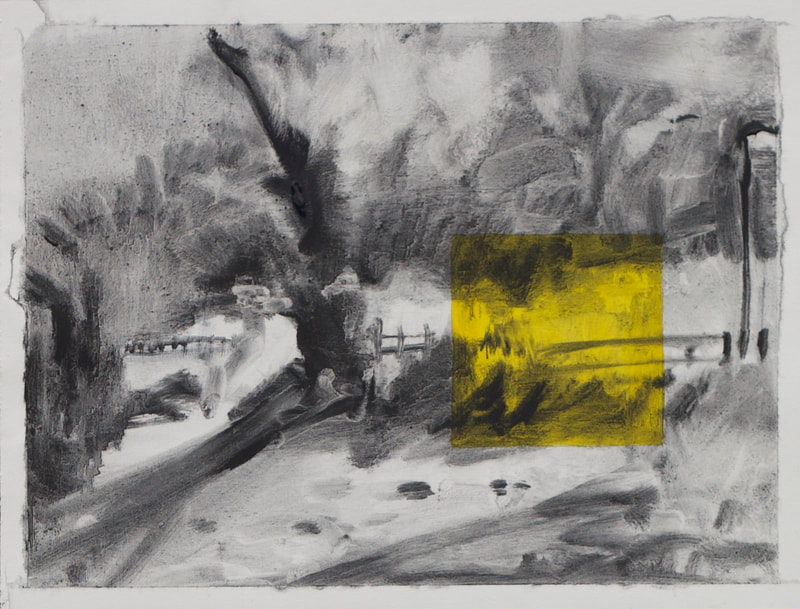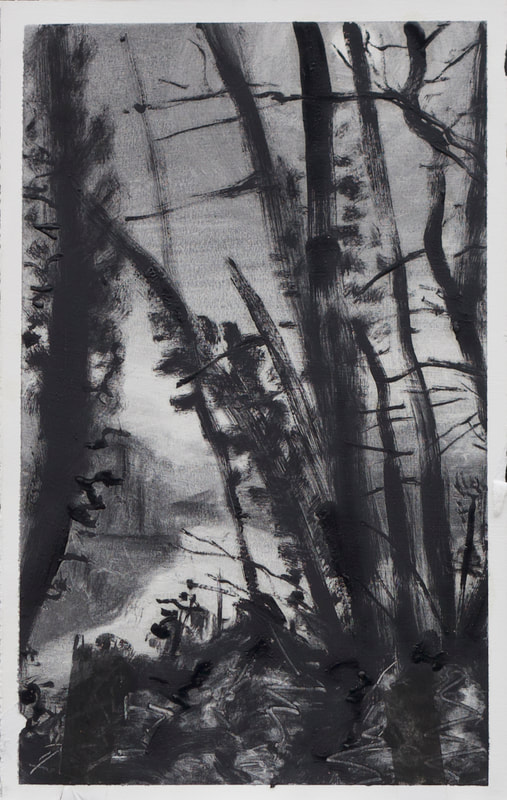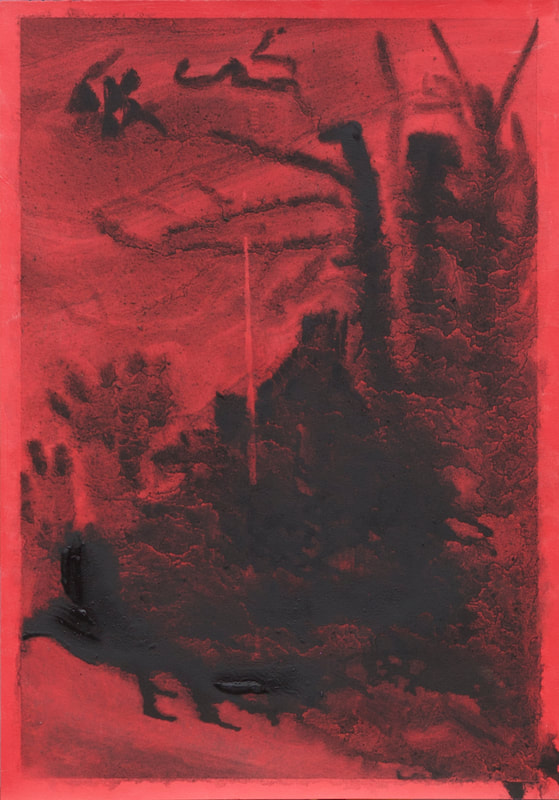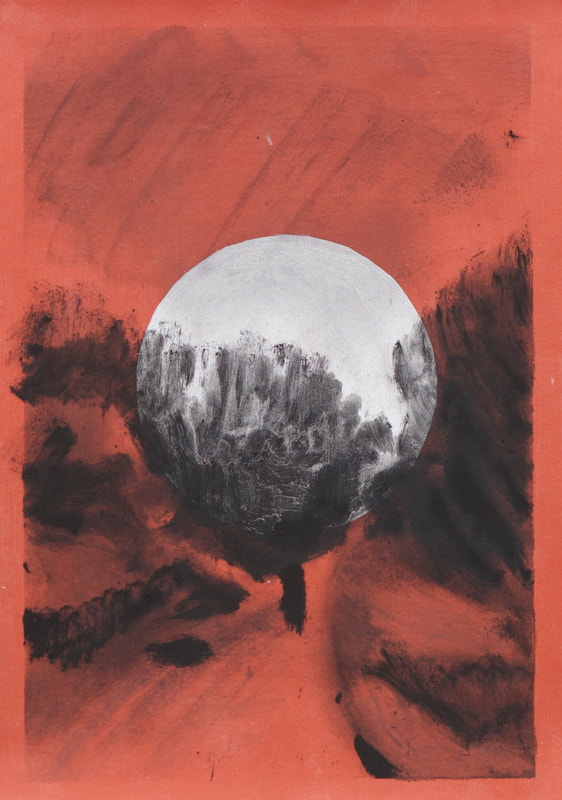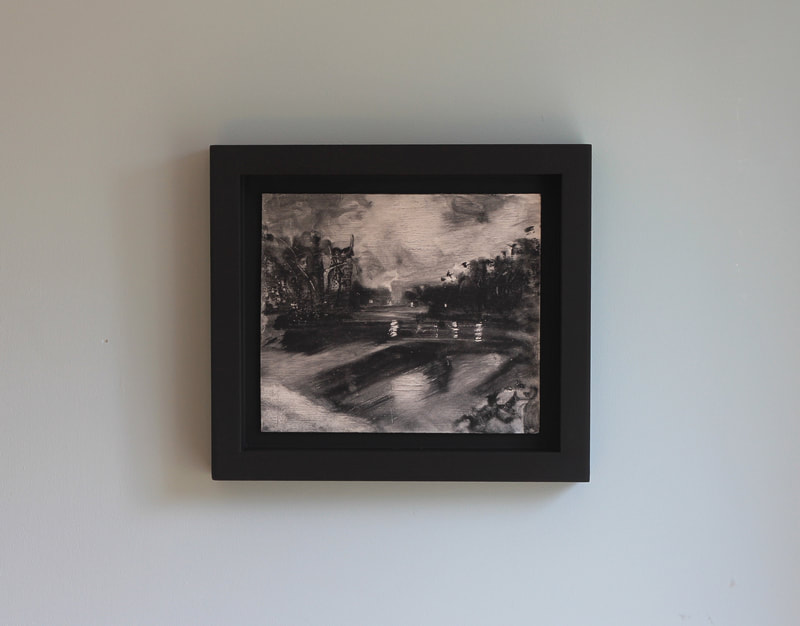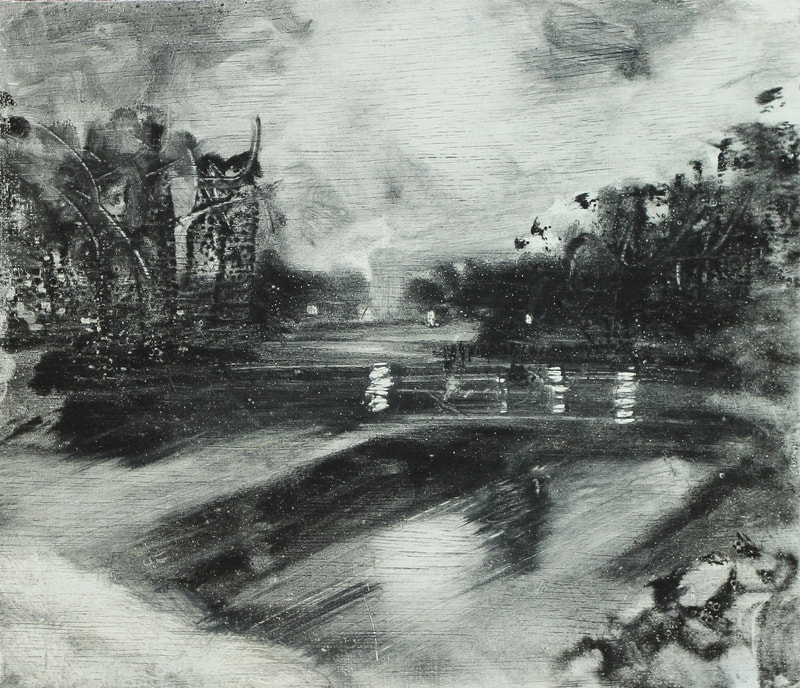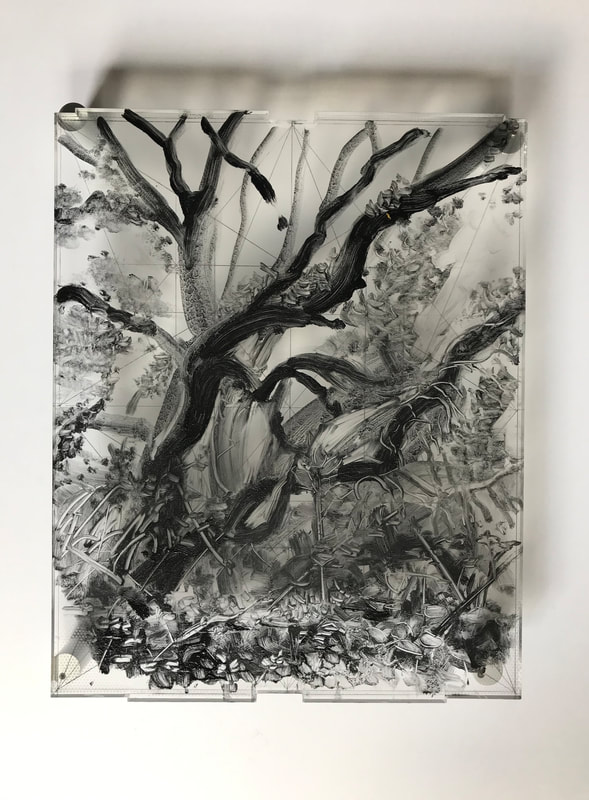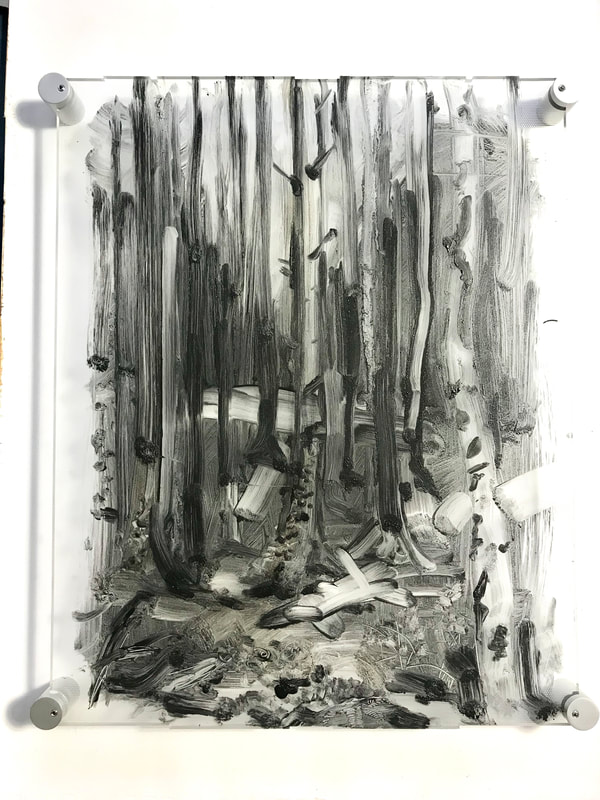The 'Charcoal Series' series was started in 2019 and features a series of single pigment sketch paintings that are usually made in situ in woodlands or along the river at night with no lighting. This means I usually have no idea what I have created until I get it back home.
The paint is hand made from Apple tree charcoal, (or where stated, other vegetation / muds). The paintings are painted on old laptop screens, scrap paper or boards using nearby twigs, leaves, fingers and brushes. They often manage to incorporate the weather. The works are a meditation on the Gothic, with obvious references to sustainability, ecology, the landscape tradition, growth and observation. All works are completed in situ.
The nocturnes in the series were influenced by the recent discovery of Pedar Balke's late limited palette paintings. The use of mundane earthy materials linking to a quite and restrained version of Northern European Modernist painting, life cycles and growth among other things. The technique used allows the paint to sit somewhere between expressing its own material qualities and its function as a representational medium.
Painting in the dark is very liberating. The works are not seen during their production and as such they are purely about looking and recording with paint and not about a 'painting' or any idea of what is a 'good' work. Its useful to separate the critical eye from the act of painting. I normally find something interesting in the way the paint his interacted with the surface, formed unusual marks or recorded the rain etc. As these are largely done during winter it is also often very cold too!
The paint is hand made from Apple tree charcoal, (or where stated, other vegetation / muds). The paintings are painted on old laptop screens, scrap paper or boards using nearby twigs, leaves, fingers and brushes. They often manage to incorporate the weather. The works are a meditation on the Gothic, with obvious references to sustainability, ecology, the landscape tradition, growth and observation. All works are completed in situ.
The nocturnes in the series were influenced by the recent discovery of Pedar Balke's late limited palette paintings. The use of mundane earthy materials linking to a quite and restrained version of Northern European Modernist painting, life cycles and growth among other things. The technique used allows the paint to sit somewhere between expressing its own material qualities and its function as a representational medium.
Painting in the dark is very liberating. The works are not seen during their production and as such they are purely about looking and recording with paint and not about a 'painting' or any idea of what is a 'good' work. Its useful to separate the critical eye from the act of painting. I normally find something interesting in the way the paint his interacted with the surface, formed unusual marks or recorded the rain etc. As these are largely done during winter it is also often very cold too!
